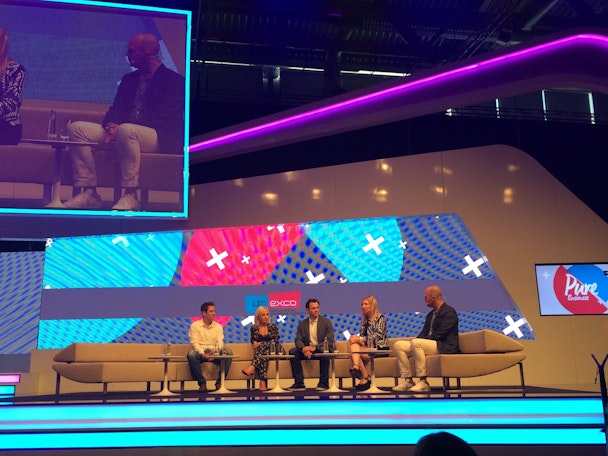Does branding have a place in short form video?
Panellists from a host of leading online content players including Truffle Pig, Viacom and Tremor video clashed heads on Wednesday (15 September) over the challenges of branding in short-form video.

Dmexco shortform panel
A key point in the debate, hosted by The Drum's Found Remote editor Natan Edelsburg, was made by panellist Vimeo’s chief operating officer Mike Weissman who argued that having a brand present in a short context is “just another form of display advertising".
Weissman suggested that there is no need to incorporate “hard imagery” into a paid-for short-form video, instead it is about “getting to the emotion the brand is trying to get through”.
The challenge is convincing an advertiser to take the risk and separate with budgets, knowing their brand will have only a subtle mention in the campaign. Weissman noted that “we find that very challenging, as well as their lack of control of the creativity of the spots”.
Vimeo, which has opposed offering pre-rolls advertising since its inception, takes a more artistic approach to working with brands. This means creative control is put on the hands of its around 4000 filmmakers, with the brands serving a minor role in the initial pitch.
Lauren Wiener, president of buyer platforms at Tremor Video, was not so convinced of a stripped back approach. The video ad company’s own research goes to prove that in short-form branded video, if the brand isn't shown in the first three seconds or so then the consumer “doesn’t know who it is and won’t know who it is afterwards”, Wiener claimed.
“If you are going to do the call-to-action it has to be very upfront which is different than the arc of a television ad where it is a very long build. We have seen it be the reverse in short-form,” she added.
Kerry Taylor, senior vice president of youth and music at Viacom, shares Weissmann’s predilection toward emotion-based content, claiming that “genre is over” in short form and commissions should be made “purely on emotion”.
She advised creators to “always consider the context of your content”, since different social networks and platforms appeal to different demographics and have stricter requirements for content creation.
This is especially true in the use of sound in short form, a trend which Snapchat’s Imran Khan spotlighted in a session on the same day. Truffle Pig’s president Paul Marcum echoed Khan’s claim that over two thirds of people will watch video on Snapchat with the sound on, while this figure drops to around 15 per cent on Facebook.
“Know whether they are going to have earbuds in or not and use it to your advantage” he advised.
Another topic that split the panel, is the use of influencers in short form, a trend which MTV tapped into earlier this year for the VMAs hosting content on Snapchat and Facebook Live.
While MTV believes there is a clear value exchange for using influencers to promote your brand organically across their own engaged audience, many remain unconvinced of the return of investment of this technique.
Marcum suggested that “influencers are just smaller versions of publishers. I think they add value but a smart programmer, broadcaster or publisher can capture that value with their own talent.”
Wiener mimicked Marcum’s view that social media talent lives everywhere, advising companies to look internally first: “Find the experts in your company that are obsessed with Snapchat and Instagram not as marketers but as people - often your interns or brand employees - and bring them into the creative meetings.”
“They are going to have the most authentic use of short form of the platform,” she concluded.

